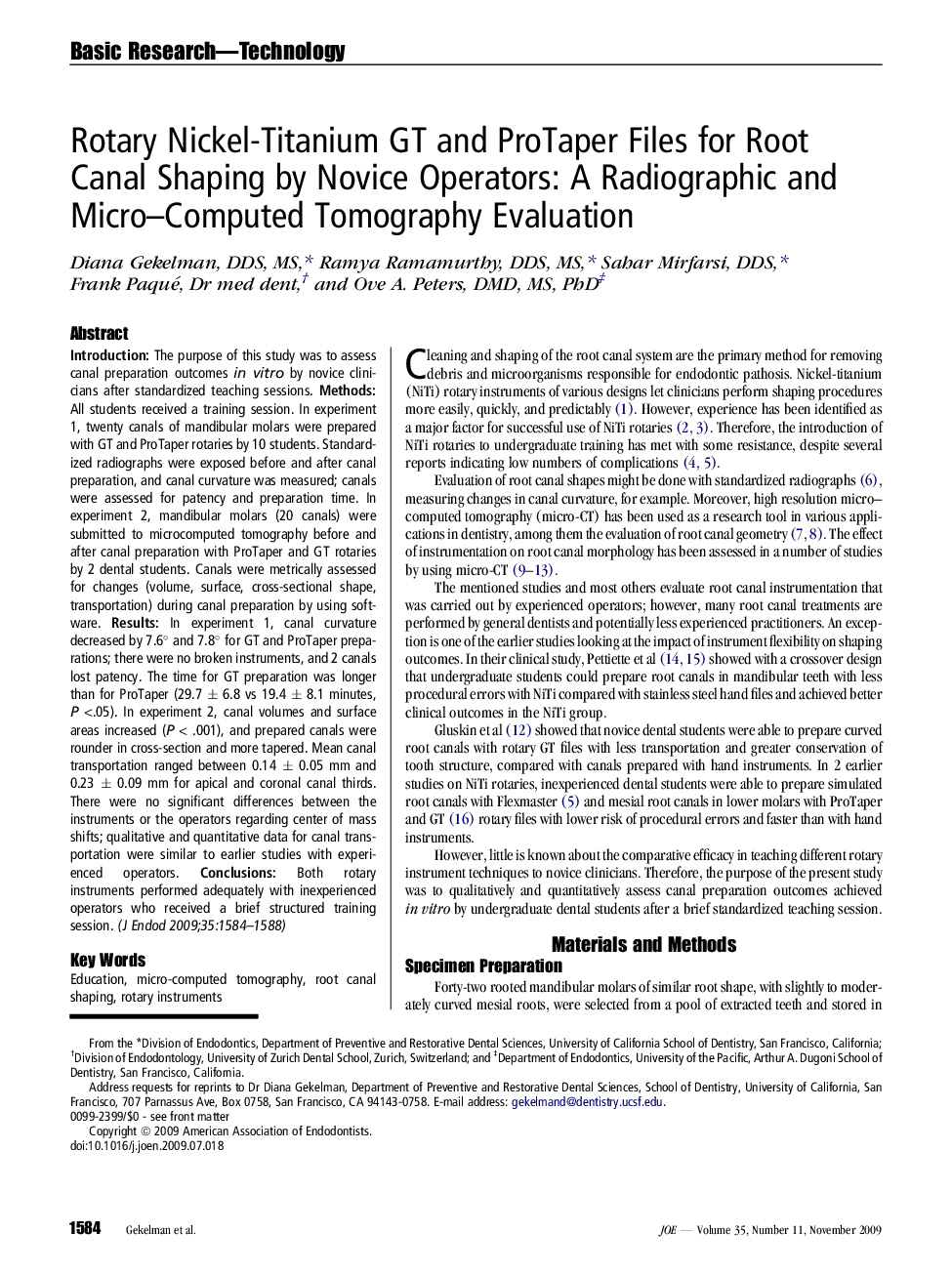| Article ID | Journal | Published Year | Pages | File Type |
|---|---|---|---|---|
| 3148282 | Journal of Endodontics | 2009 | 5 Pages |
IntroductionThe purpose of this study was to assess canal preparation outcomes in vitro by novice clinicians after standardized teaching sessions.MethodsAll students received a training session. In experiment 1, twenty canals of mandibular molars were prepared with GT and ProTaper rotaries by 10 students. Standardized radiographs were exposed before and after canal preparation, and canal curvature was measured; canals were assessed for patency and preparation time. In experiment 2, mandibular molars (20 canals) were submitted to microcomputed tomography before and after canal preparation with ProTaper and GT rotaries by 2 dental students. Canals were metrically assessed for changes (volume, surface, cross-sectional shape, transportation) during canal preparation by using software.ResultsIn experiment 1, canal curvature decreased by 7.6° and 7.8° for GT and ProTaper preparations; there were no broken instruments, and 2 canals lost patency. The time for GT preparation was longer than for ProTaper (29.7 ± 6.8 vs 19.4 ± 8.1 minutes, P <.05). In experiment 2, canal volumes and surface areas increased (P < .001), and prepared canals were rounder in cross-section and more tapered. Mean canal transportation ranged between 0.14 ± 0.05 mm and 0.23 ± 0.09 mm for apical and coronal canal thirds. There were no significant differences between the instruments or the operators regarding center of mass shifts; qualitative and quantitative data for canal transportation were similar to earlier studies with experienced operators.ConclusionsBoth rotary instruments performed adequately with inexperienced operators who received a brief structured training session.
